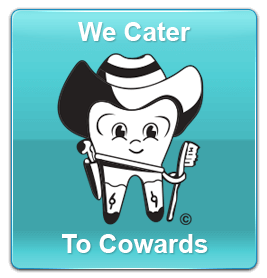Cosmetic Dentistry

What Is Cosmetic Dentistry?
Cosmetic dentistry is exactly what you would think. It focuses on improving the aesthetics of your teeth and mouth and the beauty of your smile, as opposed to traditional dentistry which focuses on oral function and the preservation of your teeth through the diagnosis and treatment of oral disease.
In general, traditional dentistry addresses problems that truly need attention while cosmetic dentistry provides you with the procedures you want in order to look your best.
Cosmetic and traditional dentistry are not mutually exclusive. This is the case, when a badly decayed tooth needs a crown which just happens to be more perfect in size and color than your original tooth, or, when orthodontics is necessary to correct your improper bite which just happens to straighten those crooked front teeth that have stopped you from letting out big smiles for most of your life! Not surprisingly, with dental perfection being portrayed by Hollywood on a daily basis and baby boomers’ pursuing the Fountain of Youth through every avenue possible, cosmetic dentistry in the United States has become a very significant part of the dentistry we perform today!
That being said, when we look back, almost any aesthetic procedure that we do in our office, except for teeth whitening, can also be considered a functional procedure depending on the circumstances. In fact, usually it’s a combination of the two!
If you are considering a smile makeover, the first step involves a detailed consultation and thorough evaluation of all of the aesthetic points of your smile. Believe it or not, there are actually specific characteristics that make up a beautiful smile! Once you fully understand the plus and minus points of your smile, only then can we begin to discuss your many options for treatment such as dental implants, veneers, crowns, cosmetic reshaping, sculpting of gum tissue that has grown over your teeth making them look short, bonding or whitening.
But while we are planning for your new smile, it is not uncommon to find dental problems that need to be addressed before or at the same time we work on the aesthetic points. It’s very important that these functional needs are addressed because many times they can negatively affect your beautiful cosmetic dental work, leaving you, once again, unhappy with your smile.
Full Mouth Reconstruction Photos
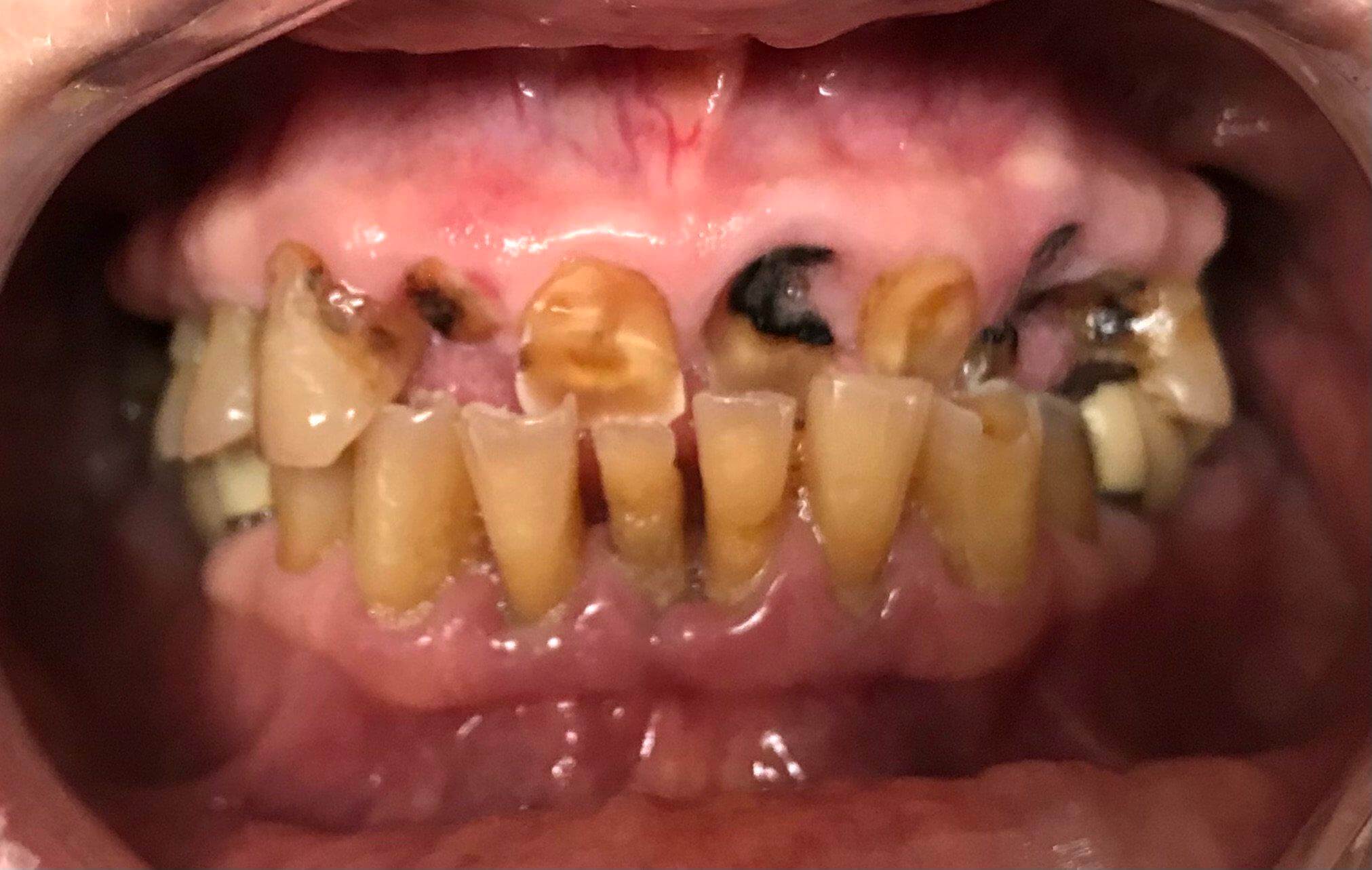
BEFORE
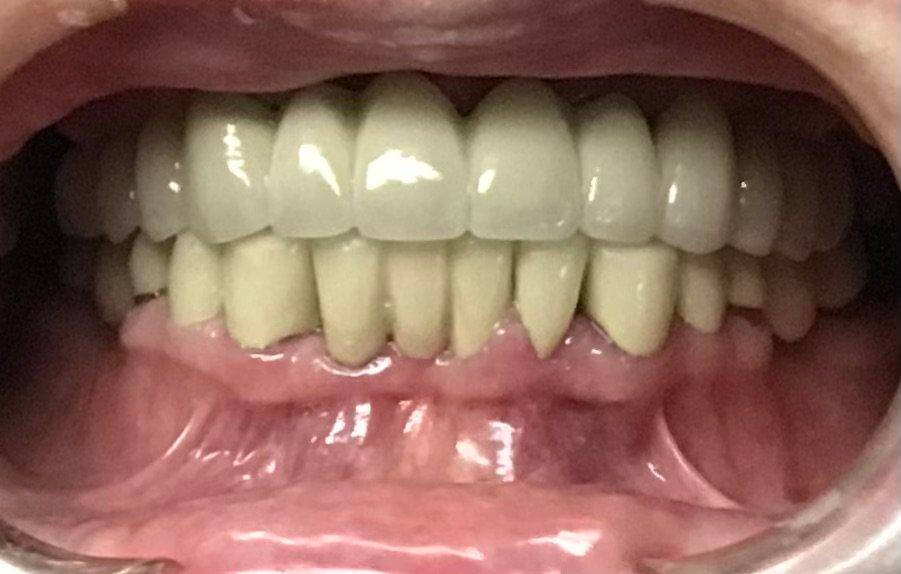
AFTER
FAQ About Cosmetic Dentistry
Why are my teeth discolored?
Probably the most common reason is a diet of dark food and drinks like coffee, tea, colas, red wine, berries, etc. Insufficient oral hygiene can also lead to bacterial stains. Genetics that dictate: 1) your personal coloring (e.g. redheads tend to have redder, darker colored teeth), 2) a more porous enamel than average, 3) darker colored dentin (the second layer under enamel) or 4) thinner enamel, can also produce a less-than-desirable tooth color.
Why should “needed” dentistry be done prior to cosmetic dentistry?
The most beautiful and perfectly created smile will never stay that way if the underlying or surrounding tissues are not healthy. Gum and decay infections are the most common problems we need to handle before cosmetic procedures.
What Is A Crown?
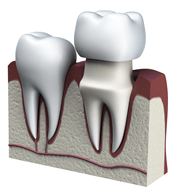
A crown, also known as a cap, is a strong, long-lasting, tooth-shaped covering that is individually created to fit over your carefully prepared existing tooth or dental implant in order to strengthen, restore or improve the appearance of that tooth.
Single crowns are most commonly used when there is no longer sufficient tooth structure left to support a filling. And if your tooth is cracked, a crown can literally hold your tooth together so that the damage doesn’t get any worse. It can also strengthen a tooth that has been weakened by infection. A crown can also replace a missing tooth when it is cemented to a dental implant thus preventing the shifting and tilting of nearby teeth. And, last but not least, a crown can restore and improve the size, shape and color of your existing tooth.
Our normal goal is to create a crown that looks as close as possible to a natural tooth, but sometimes a crown made of different material is better for our patient. One of the most common type of crowns we insert is called porcelain fused to metal. It actually is exactly as the name implies. A metal crown is created, then porcelain is fused to the metal thus covering the outside of the crown. The advantages of this crown is the strength of the metal and the general appearance and color of a natural tooth. For an even more enhanced, translucent, natural looking crown, we can offer our patients an all porcelain, super strong crown, usually used on anterior (front) teeth. And for our patients who clench and grind their teeth (especially their molars), all gold crowns offer extra strength and durability. Be assured, we will consider both appearance and function when suggesting the material most suitable for you.
What Are The Benefits Of A Crown?
What’s Involved In Getting A Crown?
The first step in getting a crown is having an impression made of your existing teeth. This is done by filling an arch-shaped tray with a impression material and pressing it onto your upper or lower arch. Within minutes, the material sets up, is popped off and used to create a temporary crown which we will insert until your permanent crown is made. Next, your tooth is slightly reduced in size and shape in order to accommodate your new crown. Then another impression is taken. Your temporary crown is inserted. At your next visit, the temporary crown is removed and replaced with a shiny new “perfect tooth.”
FAQ About Crowns
Why do some crowns or caps look so bad?
The most common cause is poor gum health. When gums are dark red or purple, it detracts from the aesthetics. Other causes are: 1) poor impressions that give a poor fit, 2) poor technical work by the porcelain technicians, and 3) poor choice of materials, including poor shade selection. In fact, all dentists should be aware of the high percentage of color blindness and consider their own possible weakness in this area. Someone else, like an assistant, can always help with shade selection.
Why do I need to replace a missing tooth?
Teeth that are not replaced cause problems. Your other teeth above and beside the empty spot will shift around and be unbalanced. You lose your chewing ability in that area because the partner tooth above or below has nowhere to chew. Missing teeth usually need to be replaced by some means and the most desirable way is with dental implants, followed by fixed or removable bridges.
How long will my crown last?
Crowns can and many times do last a lifetime! I have several in my mouth that are 30 years old! Properly done and adequately maintained with good oral hygiene and checkups insure your best chances of lifetime wear.
What Is A Fixed Bridge?
A fixed bridge is a group of connected crowns, some of which are suspended over the area where a tooth or teeth are missing, and the others of which are anchored to the neighboring teeth (abutments) or dental implants for support. They are cemented in “fixed” so that you are not bothered with daily removal. This type of restoration replaces one or several missing teeth. The nice thing about fixed bridges is that they can restore both your bite and your beautiful smile.
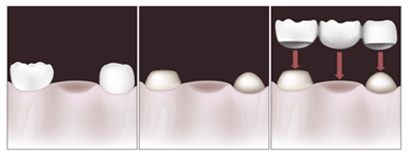
Losing permanent teeth can cause many serious problems for your neighboring teeth and the remaining teeth will begin to tilt and shift. In fact, the tooth above or below the lost tooth can begin to move up or down and out of socket, which can accelerate periodontal disease and further break down bone structure. If the missing tooth is not replaced, more teeth may eventually be lost due to the improper forces exerted during chewing.
In our office, we provide two different types of fixed bridges. Traditional fixed bridges are comprised of two or more crowns, one on each side of the missing tooth or teeth, with one or more pontics (false teeth) suspended in between. The crowns on each end are supported by natural teeth or dental implants. Either way the fixed bridge is cemented to these supports along with the pontics which span across the area of missing teeth. The second kind of fixed bridge we use is called a cantilever bridge. In this case, there are only supporting teeth on one side of the missing tooth or teeth, therefore the pontic(s) stick out over the area where we need to replace missing teeth. Use of this type of bridge must be carefully chosen since there are definite limits to its use.
What Are The Benefits Of A Fixed Bridge?
FAQ About Fixed Bridges
Do fixed bridges require special cleaning?
Fixed bridges require meticulous cleaning, both regular brushing and threading floss under the appliance.
Should I consider a fixed bridge instead of a removable bridge?
The nice thing about fixed bridges is that they are cemented in place and you don’t have to remove them on a daily basis in order to clean them. Fixed bridges are usually more expensive but worth it because they last longer.
How long do fixed bridges last?
Fixed bridges can last possibly a lifetime, but the determining factor is how well they are cleaned and maintained. I have personally seen many bridges still functioning in mouths where I placed them over 30 years ago!
What Is A Porcelain Veneer?
A dental veneer, also called a laminate, is an ultra-thin shell of tooth-colored porcelain designed to cover the front surface of your tooth. When veneers are bonded to carefully prepared teeth, the changes in color, shape, size or length result in a dramatic cosmetic improvement in your teeth and, ultimately, your smile!
This is where the artistry in dentistry really shines! I love creating that perfect smile with dental veneers. To do it correctly, many steps must be carefully completed with the help of high quality laboratory technicians. We use a dental lab near Hollywood, CA to get what I consider the best for our patients — and, yes, we have the smiles in our office to prove it! Several members of our dental team, including myself, greet our patients with veneer-enhanced smiles! And our patients notice, compliment and demand their own perfect smile!
What Are The Benefits Of A Porcelain Veneer?
What’s Involved In Getting A Porcelain Veneer?
The procedure for getting a porcelain veneer is very similar to that of getting a crown. The main difference is that less of your natural tooth needs to be reduced in order to accommodate the veneer. In fact, the lingual, or tongue side of your tooth, is many times left untouched.
The first step in getting veneers is having an impression made of your existing teeth. This is done by filling an arch-shaped tray with a impression material and pressing it onto your upper or lower arch. Within minutes, the material sets up, is popped off and used to create a temporary veneer which we will insert until your permanent one is made. Next, the front of each tooth is slightly reduced in size and shape in order to accommodate your new veneers. Some cases need more or less reduction — this is a highly individualized step. Then another impression is taken. Your temporary veneers are then fabricated in our office lab and are inserted over your prepared teeth. When we receive your permanent veneers from the Hollywood lab, you return to our office, the temporaries are removed, at which time we carefully place each veneer on its corresponding tooth to check for proper fit. This also gives you and us a sense of any shade or color variations. The reason we do this is because, at this point, we can still vary the shade of your veneer slightly by varying the shade of the bonding material we use. Once satisfied, each tooth is etched with a special cleaning agent and cemented into place. When we are all done, the smiles start coming and the life starts changing! Wow! And that is why we love dentistry!!
FAQ About Porcelain Veneers
How do I take care of my veneers?
Simply brush and floss. Stay away from hard foods and no hard biting or using the front teeth as tools!
Do I need a porcelain veneer or a crown?
This is a decision that is made on a case by case basis. If a veneer will work well, it is better because it preserves more of the natural tooth.
How long do veneers last?
As a procedure, porcelain veneers have not been around as long as others, but we do have some that are over 20 years old. My own are seven years old. If done properly with excellent technique, I believe they too can last a lifetime.
Will my veneers change color?
Usually not at all, since they are made of fired porcelain. Bad color later on can mean leakage or breakage, so checkups are important.
Can a veneer pop off? If so, what should I do?
Yes, but it is usually due to clenching, grinding or traumas — all of which can and will hurt natural teeth too. Under normal careful wear, they do not come loose often; of course, if they do, save it and bring it into the office for rebonding.
Why didn’t my last dentist offer me porcelain veneers?
To do correctly, this is a very exacting and difficult procedure. It takes extra training, excellent porcelain technician support, artistic talent, and practice! Many dentists try and fail at this because of these factors and thusly, don’t offer them.
What Is Cosmetic Reshaping?
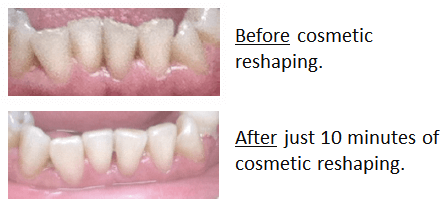
In a sentence? A very quick and inexpensive way to give your smile a polished, neater look. It is a gentle reshaping of the enamel of the anterior teeth to remove small chips, irregularities, roughness and crowding. It can be done in under 15 minutes and is one of the most dramatic and enjoyable ways to help our patients cosmetically. We do it routinely after all of our orthodontic cases, as a added value. In adults with worn or chipped teeth, it gives their smile some of its “youth” back. Our patients are routinely amazed and delighted at the results in such a short time, and for less cost than even one or two fillings!
FAQ About Cosmetic Reshaping
Can anyone get cosmetic reshaping?
In most cases, yes!
Does cosmetic reshaping hurt?
No, and it does not require anesthesia.
Is cosmetic reshaping good for the teeth?
It does no harm if properly done and actually smoothes out the bite. Also, if people look better, they tend to be happier and they generally take better care of their teeth.
Have you done this procedure often?
Yes, many hundreds of times, and I have never had a patient say they didn’t like it!
How Can I Get My Teeth Whitened?
A beautiful smile can certainly boost your self-confidence and may even change your life! Teeth whitening is probably one of the easiest things you can do to improve your smile.
Power Bleaching is the quickest and most hassle-free technique and is done here in our office. It is accomplished by thoroughly cleaning the teeth with air abrasion, which is key to getting a whiter, brighter tooth surface. Then highly concentrated whitening solutions are painted onto the teeth surfaces followed by a LASER light that activates the whitening process. This treatment creates the most dramatic effect and only takes about one and a half hours to complete. This is NOT the flashlight kit you may have seen in a mall or on TV, but real LASERs, used at the proper settings for the best possible whitening.
At-Home Tooth Whitening can whiten your teeth dramatically using various forms of hydrogen peroxide solutions, most often used in a gel form called carbamide peroxide. This is used with the “tray” method. A custom-made tray is constructed for each patient and the whitening gel is placed in the tray and worn on the teeth for one to four hours depending on the amount of staining. This process is safe and effective and is done as an at-home treatment. The tray process usually takes approximately 2-3 weeks to obtain the desired whitening effect.
Whitening Strips or “Beauty Parlor” Whitening are generally okay, but weak. You cannot whiten dirty or deeply stained teeth very much for very long. The techniques and chemicals available to dentists are far superior and much safer.
